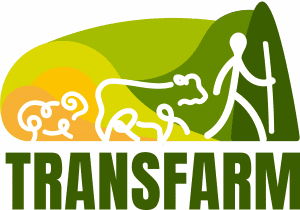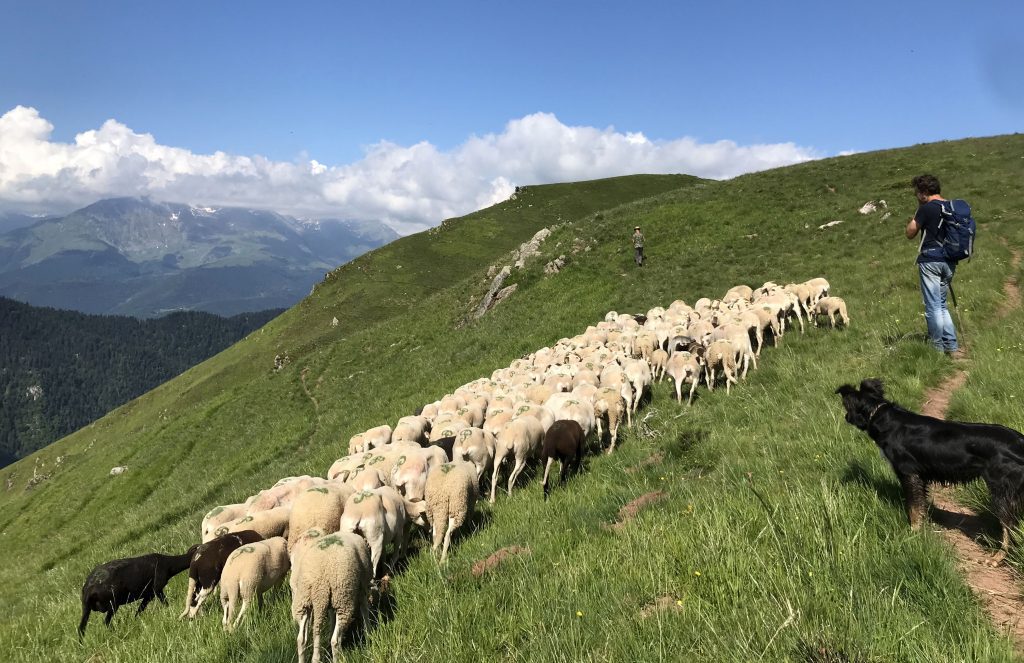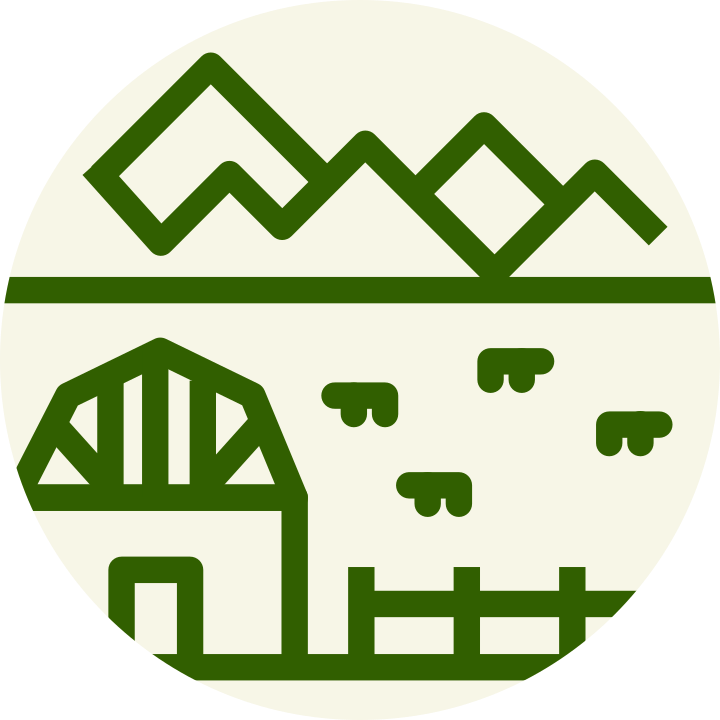Pierre Pujos has a flock of 300 sheep (150 ewes and 150 sheep). He has been practising long transhumance with 180 animals every summer since 2019. The rest of the animals remains at the farm, under the supervision of his employee).
For the first two years, transhumance was done by truck. Since 2021, Pierre Pujos has been doing the 160 km of his vertical transhumance entirely on foot. From his farm on the great cereal plain of Gascony at an altitude of 160 m, he first moves to the Pyrenean village of Ardengost at an altitude of 1,000 m. He then moves to the high mountain pastures at an altitude of up to 1,700 m.
The day’s stages are on average 12 km. Pierre Pujos tries to alternate three days of walking for one day of rest. In total, the journey takes three weeks. The accompaniment of a car is essential to carry the tent, the watering trough, the animal pen and the transhumant breeder himself. In the afternoon, Pierre Pujos walks the route taken by the animals the previous day for verification. He, therefore, needs to be brought back to the starting point by one of the people accompanying him. The people are either volunteers or his employee. The latter comes from time to time to provide backup.
The smallest possible paths (about 50% dirt) or small tarmac paths are preferred on the route. The herd has to cross two major roads and a railway line. The course is therefore prepared in advance and declared to the prefectures of the two departments concerned. Certain precise times of passage must be mentioned. Two trainees assist Pierre Pujos. They check the route and inform the town halls by telephone. For 2023, an alternative route was selected to avoid a quagmire. The remaining part of the route is almost identical to that of the previous year.
On arrival in the mountains, the herd spends three weeks in the village (from mid-May to 10 June) where it grazes the open areas. Then, the livestock climbs to 1700 m. The pastures in the Ardengost commune is rented from the municipality. The location of the pastures are defined in advance: “Once you have a place, you don’t let it go because it is increasingly difficult to get land in the mountains,” Pierre Pujos says. The demand for grazing in the mountains is rising sharply on the high pastures.
From mid-May to mid-October, Pierre Pujos employs two people part-time (a shepherd and a shepherdess) to look after the flock because Pierre Pujos goes back to his farm. However, he comes to the mountain pastures from time to time during the summer. A pastoral group (an associative structure created by the 1972 pastoral law) pays the shepherd and the shepherdess and manages the activity in general.
The other herds of the Ardengost pastures (1100 ewes and 30 cows) come by truck or on foot over one or two days from the nearby valleys. However, some additional mountain farmers are starting to make the journey on foot.




